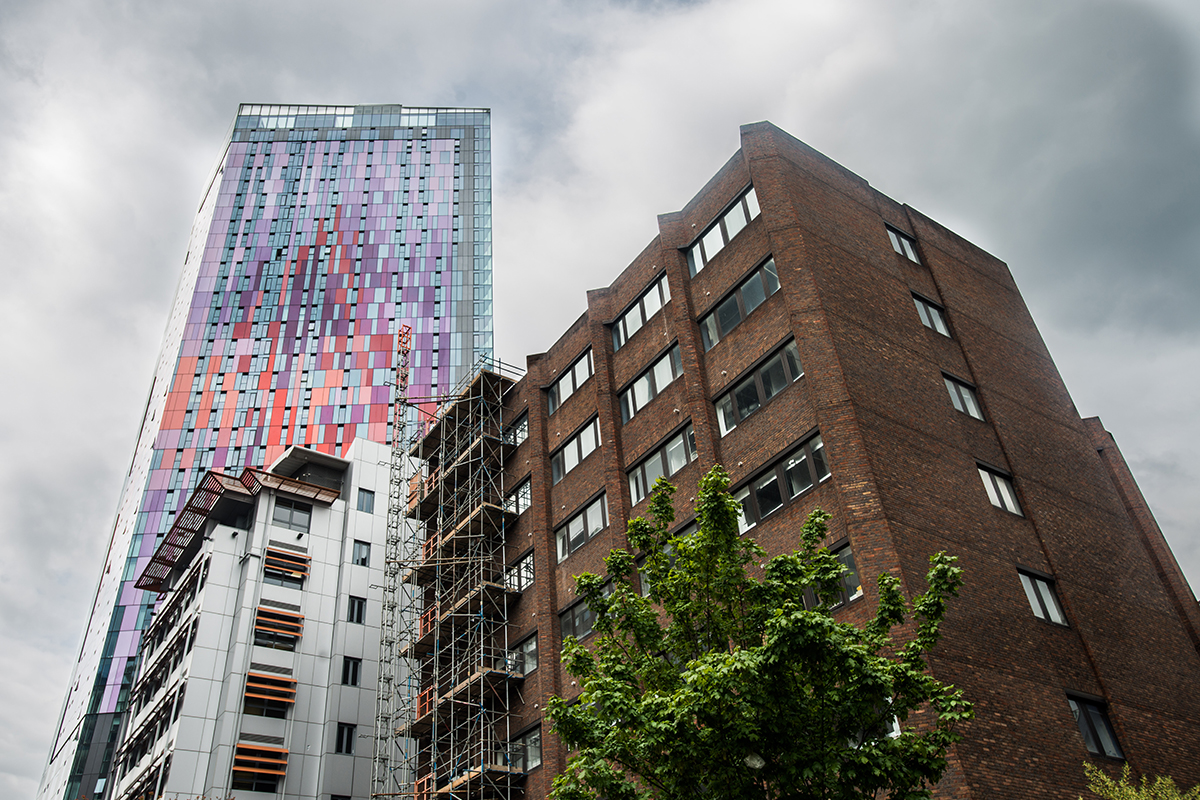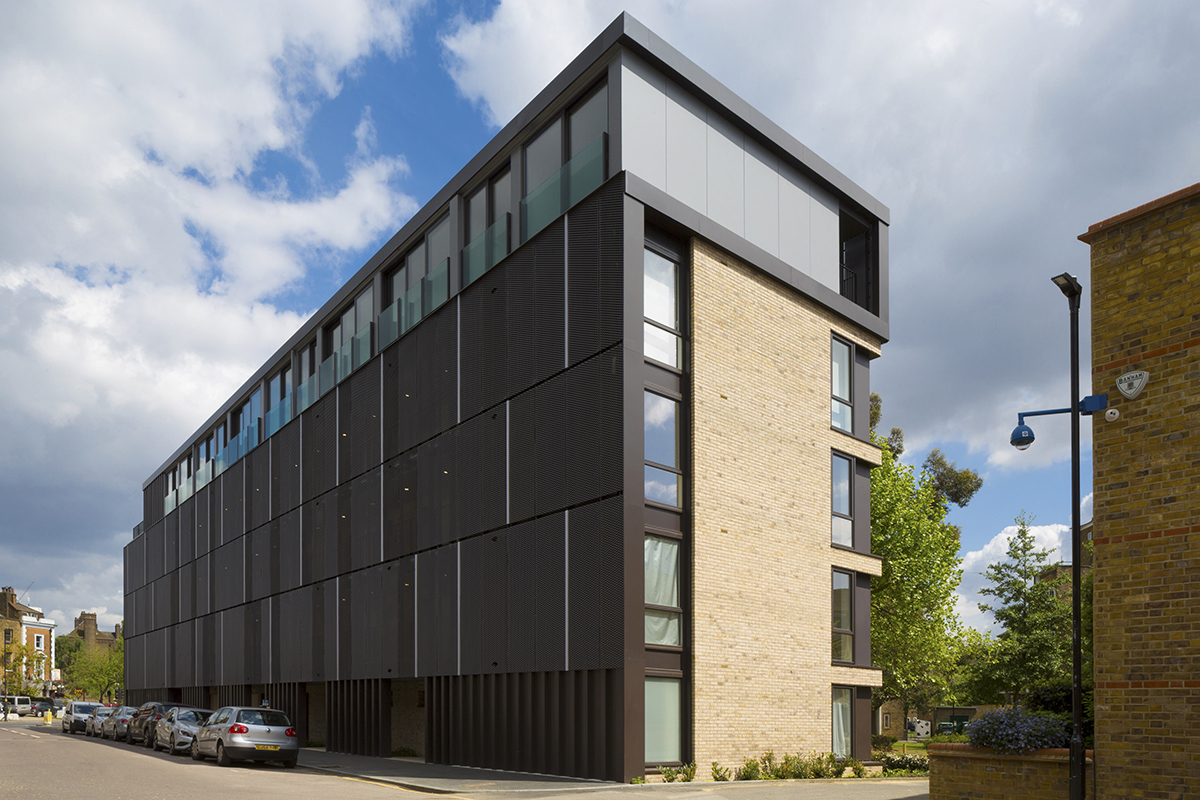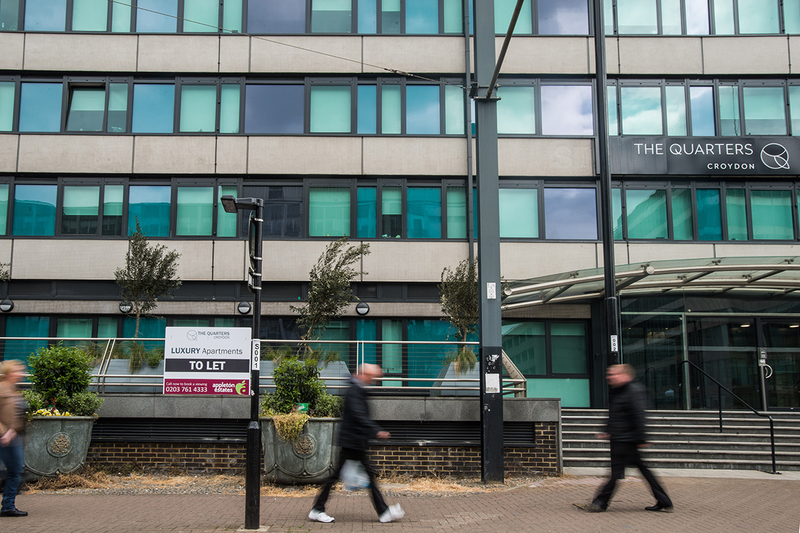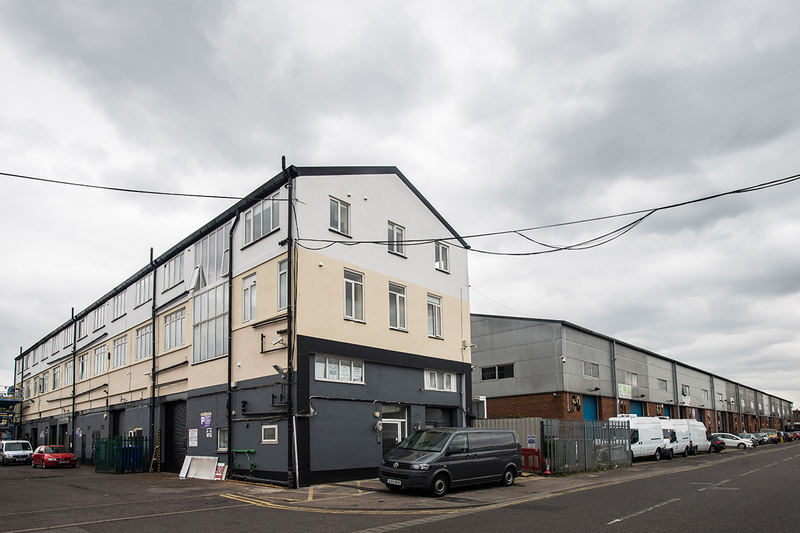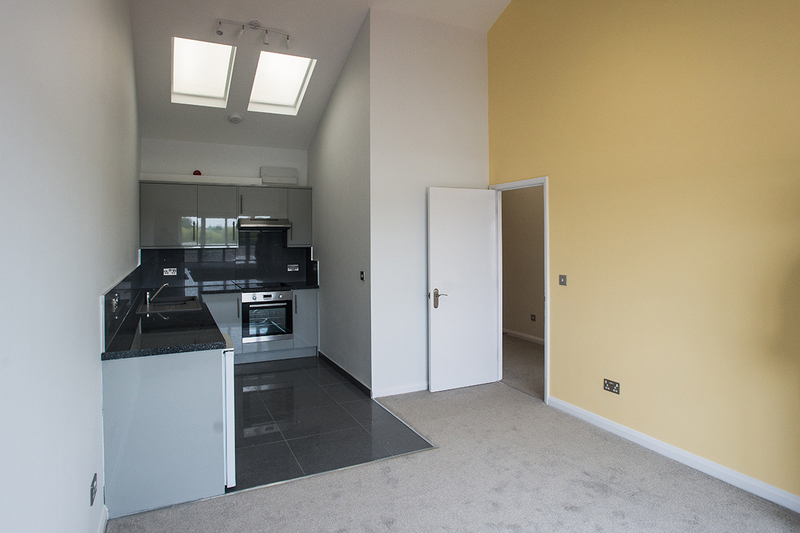You are viewing 1 of your 1 free articles
Space invaders: a look at office-to-resi
Permitted development rights are being used to turn office blocks into flats. Nick Johnstone asks whether these conversions are up to scratch. Photography by Simon Brandon.
When former housing minister Gavin Barwell recently enthused about delivering 12,824 “desperately needed” homes – through a 2013 policy that makes it easier to convert offices into housing – he failed to mention the quality of what was being built on his own doorstep.
Mr Barwell’s Croydon Central constituency has been one of the areas worst affected by government-imposed permitted development rights (PDR) – a provision which allows developers to circumvent planners and press ahead with office-to-residential conversions irrespective of living standards.
Across the borough, more than 1,700 units have been produced using PDR, with many falling short of standards that Croydon Council would otherwise insist on. According to council data released to Inside Housing, 1,505 of the 1,705 homes (88%) being delivered in Croydon under PDR are in conversions containing units that fail to meet government space standards.
Sacrificing quality
One conversion, above a shop on George Street, contains a flat measuring 14.9 square metres – less than half the London Plan’s advised 37 square metres. A further five contain flats sized at less than 20 square metres.
Eighty per cent of Croydon’s conversions include no outdoor space, and these developments are happening with zero affordable housing or infrastructure contributions.
As the government seeks to extend PDR with its Housing White Paper, councils – including Croydon – are fighting back with Article 4 directions allowing them to retain office space in key business districts, where councils can justify them to central government. Lambeth is the most recent, having adopted Article 4 in March.
The debate in Lambeth, Croydon and other areas focuses on economic growth – the problem of losing office space – as opposed to the scourge of poor quality, undersized flats. But Tom Copley, Labour’s housing spokesperson for the London Assembly, describes these developments as “new slums” and “mere boxes for people to exist in”.
Has London’s housing shortage got so bad that we need such low-grade accommodation at any cost? And if empty office buildings aren’t the right fit for commercial tenants, can they really make for adequate homes?
Just to the east of the River Lea, in the London Borough of Waltham Forest, lies the Argall Avenue Industrial Estate. According to the website of one east London-based estate agent, it is also Leyton’s newest residential district.
Planted in the middle of this industrial sprawl, sandwiched between two rows of low-rise commercial units, is what used to be – and what still looks like – a three-storey office block called Roxwell Studios. Its ground floor is taken up by loading bays, but the two floors above have just been converted into flats. The first tenants are due to move in within the next few days.
Since being converted to residential use by developer Lee Valley Estates, there have been no changes to the building’s unlovely external façade. The smallest flats come in at 26.4 square metres.
Jon Polledri, managing director of Lee Valley Estates, describes its location as “perfect”, referencing its proximity to Lea Valley Eastside, a regeneration project being run by the council next to the newly opened Lea Bridge Station.
However, when contacted by Inside Housing, posing as a potential buyer, the estate agent letting the flats has a rather different view. “We get mixed reviews; you are in the middle of an industrial estate – the situation of the building is far from ideal.” It’s not your standard sales pitch.
Surrounded by white vans, pick-up trucks and corrugated roofing, Roxwell Studios is bleak. Inside, the studio flats are as pokey as the 26.4 square metres suggests. The studio flat is bright – it has plenty of double-glazed windows, which serve to keep the noise outside at bay. But it is also tiny: long and thin in shape, with a low ceiling that curves over the space like an aeroplane’s wing, and a miniature kitchen at one end. There is little storage space and no room for a washing machine.
Lack of control
In its marketing material, Lee Valley Estates says it is “creating enterprising communities”. Yet Roxwell Studios is in a so-called Business Improvement District (BID), meaning the council wants to protect it as a business location – somewhere designed for enterprise, not rabbit hutch living.
The BID’s manager, Juneed Asad, calls the development an “eyesore”. He adds: “It’s a very busy estate with lots of articulated lorries. It’s definitely not somewhere you’d want kids running around, for example.” As a housing development, Roxwell Studios sticks out like a sore thumb.
Although all councils get notified of plans to convert under prior approval rules, Waltham Forest Council has been powerless to block the scheme. And the building’s appearance and sense of isolation are clear indicators of what can go wrong when local planners are circumvented.
Lucy Shomali, director of regeneration and growth at the council, says: “We were assuming [PDR] wouldn’t have a particularly significant effect, but cumulatively over the years, it has.
“A specific issue emerged on the Argall Avenue Industrial Estate, with encroachment of [PDR] on a very busy industrial estate and the impact on surrounding businesses’ ability to function without creating health and safety issues for residents. It’s been a real concern for us.”
“The potential is for creating poor quality housing. It is very short-sighted.”
After discovering what was happening on the Argall Avenue Estate, Ms Shomali says the council began investigating the cumulative impact of PDR. “Because of the demand for housing, developers are developing in places where they never would have developed before, and we have no control over the unit mix, space standards, managing parking pressures, or contributions towards infrastructure,” she says.
Since 2013, 405 of these dwellings have been created in Waltham Forest, covering 200,000 square feet of office floor space (incidentally, the council’s employment land study says there is a shortfall of 200,000 square feet of workspace across the borough). The trend is increasing year on year: from 45 units in 2013 to 155 in 2016, according to Waltham Forest Council.
The council now has cabinet approval to introduce an Article 4 direction, but to avoid hefty compensation claims, councils are forced to give developers 12 months’ notice, meaning there is always a race to rush out units before the deadline.
London’s councils, from Camden (which says it has seen 652 homes developed across 72 office buildings since 2013) to Kingston (which says it has lost more than 150,000 square feet of offices over the same period), are responding widely with Article 4 directions, supported by the Greater London Authority (GLA). The London Assembly’s Housing Committee also unanimously opposes PDR.
Andrew Boff, the committee’s spokesperson, says: “The Assembly is united against PDR. The potential is for creating poor quality housing. It is very short-sighted.”
The Department for Communities and Local Government disagrees. A spokesperson says: “Our reforms have cut unnecessary planning bureaucracy so that offices and other buildings can be converted into much-needed homes. We’re clear that developers should be building the homes that local people want. All new homes must meet our building regulations which set robust wminimum standards to protect the homeowners and tenants.”
These minimum standards only cover basic things like electrical and heating systems; they do not extend as far as controlling flat sizes or tenure mixes, or require Section 106 payments towards affordable housing and infrastructure.
Hopes that PDR would only affect empty office space have not been realised either. A recent estimate from the GLA suggests 40% of London offices turned to residential in the past year had incumbent tenants, meaning they were converted after a lease was either broken or came to an end.
Not every residential conversion is a bad one. PDR has certainly brought some redundant space back into use, hence Mr Barwell’s pride at the 12,000-plus units developed in 2015/16.
Nick Sharpe, planning partner at Montagu Evans, says: “It’s resulted in some pretty shoddy development, but it’s allowed a lot of office stock to be reused. It’s had some quite good effects in some places.
“If you’re a Tory, you can deliver a lot of units quickly and don’t need to knock anything down: the building is already permitted by local residents, although it means that if you’ve got a horrible building it will stay horrible for a long time in the future.”
Mr Barwell’s constituency is clearly not the only London borough grappling with these issues. But due to a legacy of poor office stock, inherited from the 1960s-1980s development boom, the area provides the most dramatic evidence of the policy’s shortcomings. Croydon has lost two million square feet of office space since PDR for office-to-residential was introduced in 2013.
Branding issue
The council has introduced an Article 4 for the town centre and is looking to expand this further. Alison Butler, cabinet member for homes, regeneration and planning at Croydon Council, says: “Croydon was hard hit by permitted development due to the large availability of office stock capable of conversion.
“However, bringing the Article 4 into force has enabled us to reduce the development of small, substandard property. Croydon is committed to providing new, affordable homes for local residents, but this cannot be at any cost.”
Claustrophobic apartments, signed off before the Article 4 kicked in, are still being developed. And the prevalence of studio, one-bed and (to a lesser extent) two-bed housing suggests that developers left to their own devices will ‘max out’ schemes to boost the quantity of units and overall yield.
AA Homes is developing three schemes in Croydon. The company’s Cygnet House scheme, which unlike many has a new façade, offers “luxury type appartments [sic]”. The sales details tell a different story, showing relatively cramped flats, with windows oddly configured and no balconies or communal space. The smallest units are 32.2 square metres.
Anwar Ansari, managing director of AA Homes, says: “PDR has been a fantastic opportunity. It’s become a starter home for people – a replacement for affordable housing that we are able to deliver. It’s a quick decision-making process for us. If we had to go through planning we wouldn’t be able to get funding to do the developments.”
Mr Ansari describes PDR as an opportunity to give medium-sized house builders a leg up, as the planning process can involve millions in consultancy fees, pricing out all but the “big boys”.
Another local developer, Inspired Homes, sells itself as a micro-apartment specialist, describing the undersized units at its schemes as micro-flats enabling homebuyers a first foot on the ladder. One-beds are typically 27 square metres. Much smaller and they would be unmortgageable, according to Martin Skinner, chief executive of Inspired.
He says: “What PDR does is accelerate the process for developers, and allows us to innovate where normal planning procedures wouldn’t have done. Primarily that’s space standards, which planning would have prohibited: planners don’t have to follow space standards but they do.”
Mr Skinner claims savings on viability testing and planning fees can generate an extra £25 per square foot to be spent on higher specifications. This, he says, has allowed the company to replace all façades and deliver homes that are of a higher quality.
“I wouldn’t automatically say that smaller is worse. The biggest negatives are when people have built them below mortgageable levels.”
Clearly, this cuts two ways. One person’s micro-flat might be another’s nightmare. Developers have rushed in to exploit what is arguably a planning loophole, and in some cases it has produced substandard stock.
The much-vaunted Housing White Paper asks how housing delivery can be “supported through planning”, using “tools” such as PDR. These tools are certainly boosting the numbers, but when it comes to creating the right homes in the right places, there is still work to be done.
